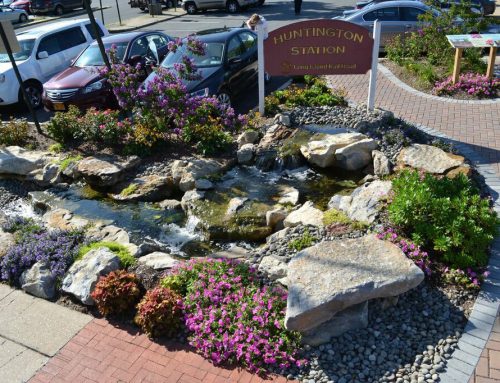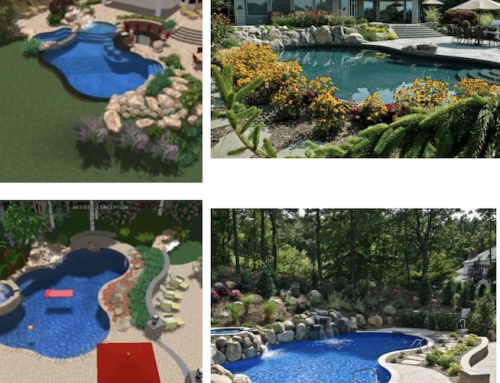Thanks to a revolutionary design from Aquascape Inc., today you can combine a recirculating decorative water feature (humble or grand) with a sub-surface rainwater harvesting collection system. This collected water can be used at your residence and/or business for jobs that don’t require treated water: washing vehicles, watering a lawn, spraying down a deck, or nourishing a garden.
The Deck and Patio Company — through its Rainwater Harvesting Group — specializes in these Aquascape’s RainXchange systems. Recently, we’ve been at work in Brooklyn, New York, where a very tight city backyard is barely 25’x 12’.
“The clients have a four-story walk-up,” says our Outdoor Living Expert, Bill Renter. “They wanted to collect all the water that comes off their roof.”
In addition to the obvious “green” aspects, the clients were keen to take advantage of certification from the U.S. Green Building Council’s LEED (Leadership in Energy & Environmental Design) program. According to the Council, certification may allow property owners to “qualify for a host of incentives like tax rebates and zoning allowances. Not to mention they retain higher property values.”
Renter adds that rainwater harvesting also reduces energy and water bills, sometimes by as much as 40%. LEED points can accrue from reducing municipal water requirements, by using locally-sourced materials that reduce transportation costs, and from reusing old bricks or materials, etc.
The following photos and video show The Deck and Patio Company hard at work at this Brooklyn project; we’ve also included two photos that showcase how beautiful a completed water harvesting job can look.
We used all Aquascape Inc. products, e.g: an underlayment to absorb roughness and prevent rocks and roots from puncturing equipment; AquaBlox (plastic matrix modular system for water storage and filtration), submersible pump to operate the water feature (bubbling rock) rock, etc.















Leave A Comment
You must be logged in to post a comment.